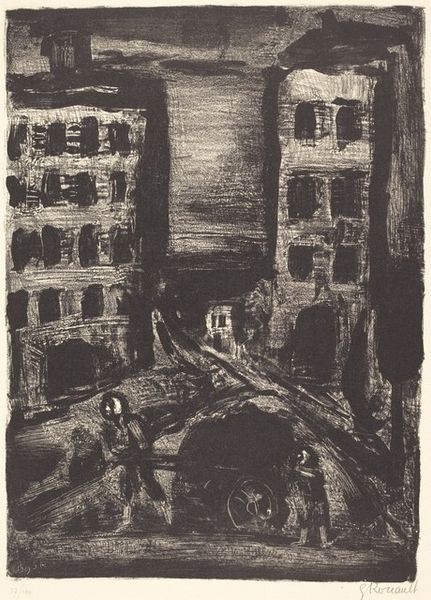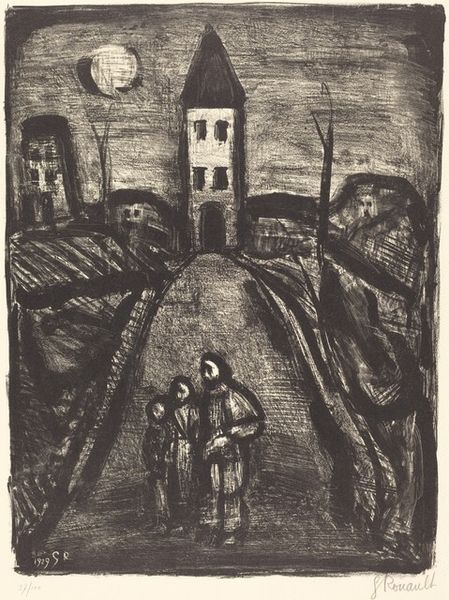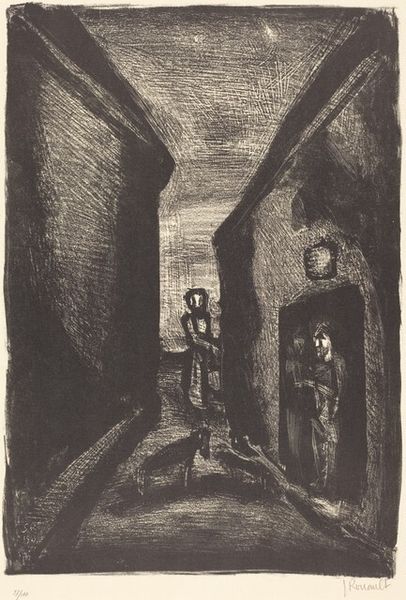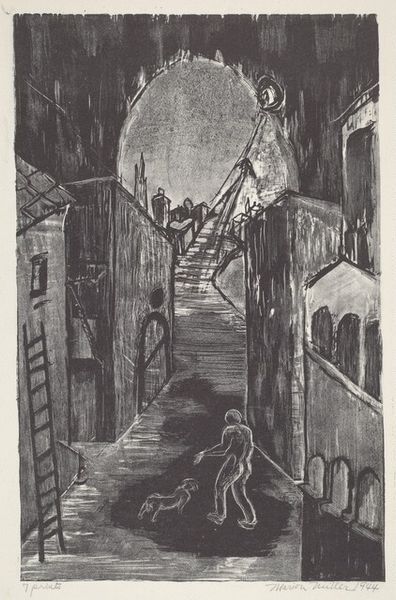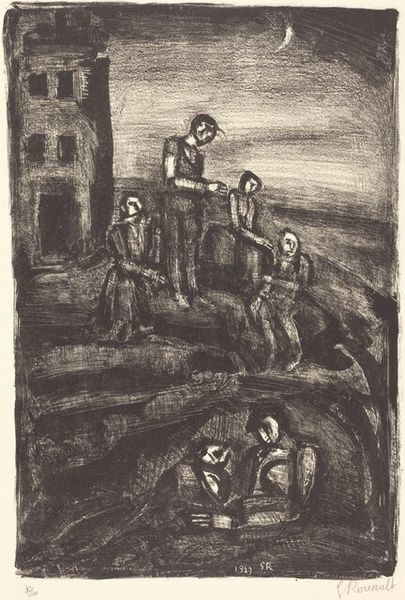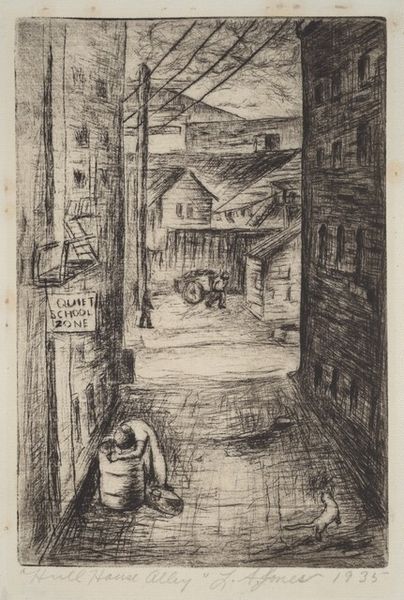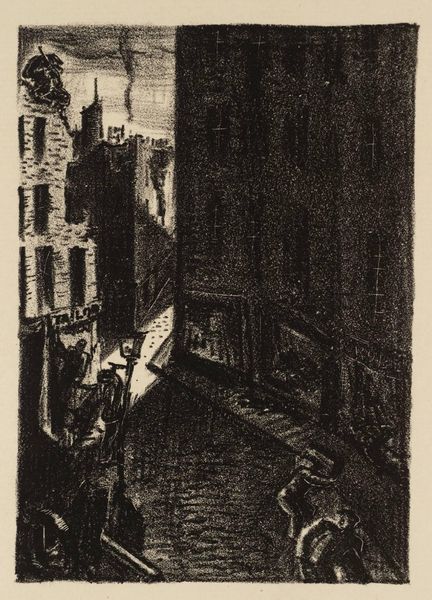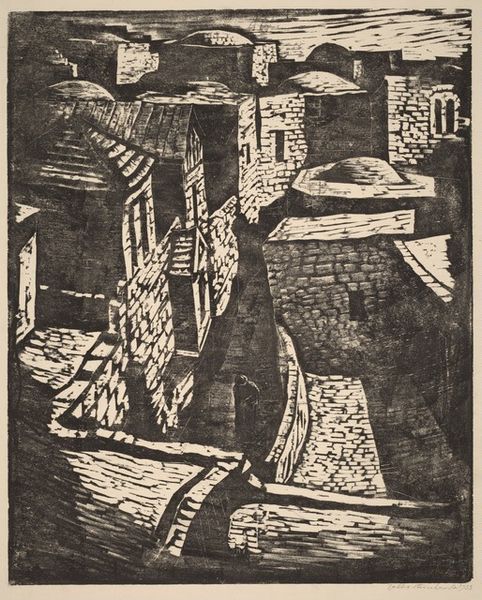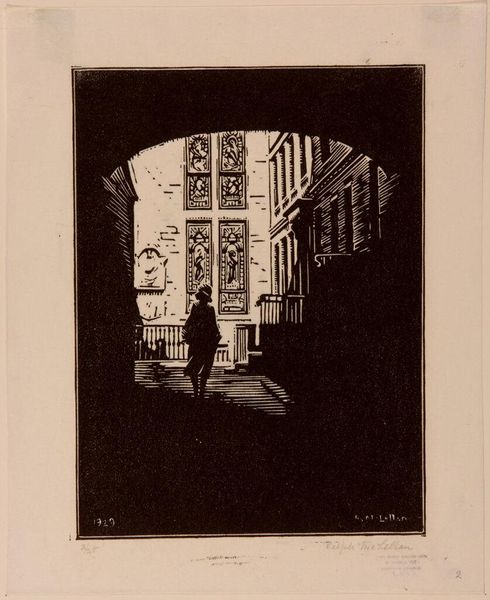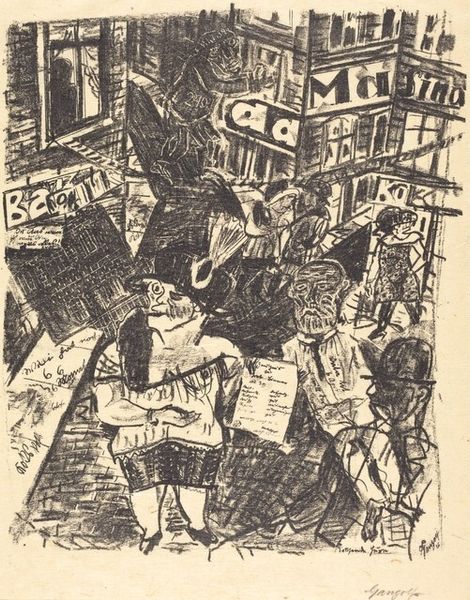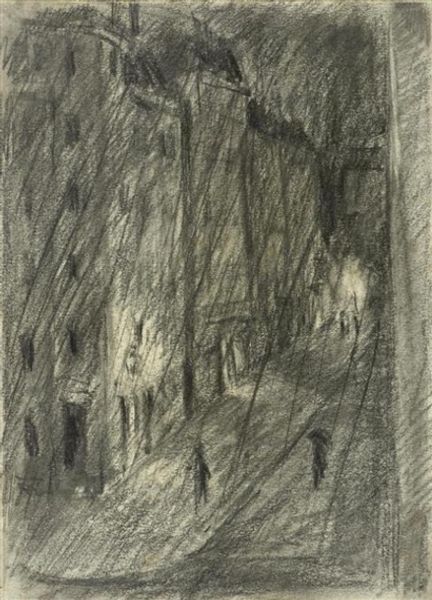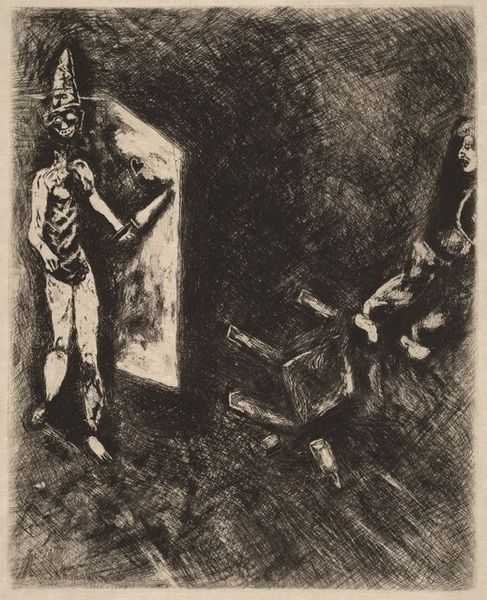
# print
#
figuration
#
expressionism
#
cityscape
#
genre-painting
Copyright: National Gallery of Art: CC0 1.0
Curator: Looking at this print by Georges Rouault, created in 1929, I'm struck by its sheer bleakness. It's titled "Faubourg des Longues Peines (Dans la Rue)," which translates to "Suburb of Long Sorrows (In the Street)." Editor: That title certainly prepares you for what you see, doesn’t it? The somber mood is immediate; there’s this overwhelming sense of oppression evoked by the dense, scratchy lines. Curator: Exactly. Rouault was deeply concerned with the social issues of his time. This image, rendered through the medium of print, captures the harsh realities faced by those living on the margins in interwar France. Note how he often depicted the downtrodden, and how that's informed by his devout Catholic faith. Editor: The composition itself contributes to that feeling of confinement, wouldn't you say? The architecture seems to loom, pressing down on the figures clustered in the foreground, their faces barely visible. It's almost claustrophobic. Curator: Indeed, Rouault employed expressionistic techniques to convey the psychological state of his subjects, mirroring their suffering through distortion and stark contrasts. The figures almost seem to merge with the grim urban landscape, suggesting a loss of individual identity within an uncaring system. It feels like looking at a scene ripped straight from the novels of the period, Zola perhaps. Editor: And the heavy lines really trap them. I see how the artist focuses our eye—dark outlines creating both figures and architecture, unified in tone and texture to intensify the print's impact. Curator: Ultimately, Rouault uses these techniques not only to depict despair but also, I believe, to evoke a sense of empathy within the viewer. Editor: So even from the perspective of purely formal observations, we still meet in shared emotional territory. Curator: Exactly, the print is evidence that formalism and the examination of sociocultural constructs need not exist separately, particularly with powerful imagery like this.
Comments
No comments
Be the first to comment and join the conversation on the ultimate creative platform.
